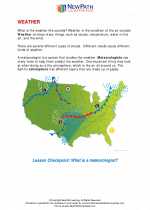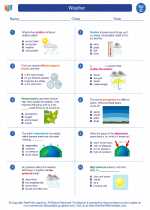Biomes
A biome is a large geographical area of distinctive plant and animal groups, which are adapted to that particular environment. Biomes are often defined by factors such as climate, relief, geology, and soil. There are several major types of biomes, each with its own unique characteristics and species. Understanding biomes is important for understanding the distribution of life on Earth and the interactions between living organisms and their environment.
Major Types of Biomes:
- Tundra: Cold, treeless landscapes; characterized by permafrost and low-growing vegetation adapted to harsh conditions.
- Desert: Dry, arid regions with sparse vegetation and extreme temperature fluctuations.
- Grassland: Wide open spaces with grasses as the dominant vegetation; can be tropical or temperate.
- Forest: Can be divided into several subtypes, including tropical rainforests, temperate forests, and boreal forests; characterized by different types of trees and diverse flora and fauna.
- Marine: Includes oceans, coral reefs, and estuaries; characterized by saltwater and a wide variety of marine life.
- Freshwater: Includes lakes, rivers, and wetlands; characterized by non-salty water and diverse aquatic life.
Study Guide:
To understand biomes, it's important to consider the following aspects:
- Climate: How does climate affect the characteristics of different biomes? What role does temperature, precipitation, and sunlight play in shaping these environments?
- Geography: How does the physical geography of an area influence the biome that develops there? Consider factors such as elevation, slope, and proximity to water sources.
- Plant and Animal Adaptations: What are some specific adaptations that plants and animals have developed to survive in different biomes? How do these adaptations help them thrive in their respective environments?
- Human Impact: How have human activities impacted various biomes? Consider issues such as deforestation, pollution, and climate change, and their effects on different ecosystems.
- Conservation: What measures can be taken to preserve and protect the diversity of biomes around the world? How can individuals and communities contribute to the conservation of these valuable ecosystems?
By exploring these aspects, you can gain a deeper understanding of the rich diversity of biomes and the intricate relationships between living organisms and their environments.
[Biomes] Related Worksheets and Study Guides:
.◂Science Worksheets and Study Guides Third Grade. Weather
Study Guide Weather
Weather  Worksheet/Answer key
Worksheet/Answer key Weather
Weather  Worksheet/Answer key
Worksheet/Answer key Weather
Weather  Worksheet/Answer key
Worksheet/Answer key Weather
Weather  Vocabulary/Answer key
Vocabulary/Answer key Weather
Weather  Vocabulary/Answer key
Vocabulary/Answer key Weather
Weather 

 Worksheet/Answer key
Worksheet/Answer key
 Worksheet/Answer key
Worksheet/Answer key
 Worksheet/Answer key
Worksheet/Answer key
 Vocabulary/Answer key
Vocabulary/Answer key
 Vocabulary/Answer key
Vocabulary/Answer key

The resources above cover the following skills:
EARTH AND SPACE SCIENCE (NGSS)
Earth’s Systems
Students who demonstrate understanding can:
Represent data in tables and graphical displays to describe typical weather conditions expected during a particular season.